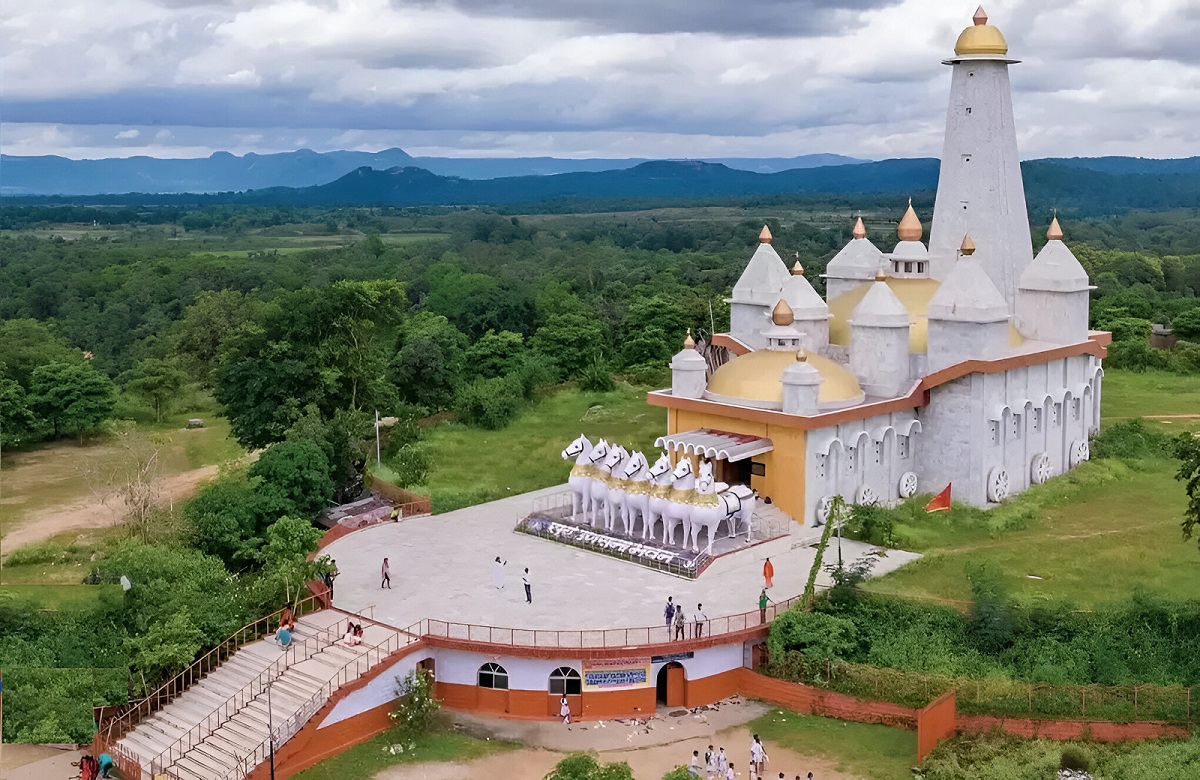Jharkhand: A Land of Forests, Minerals, and Untamed Beauty
Tucked away in eastern India, Jharkhand is alive with a complex cultural tapestry, stunning scenery, and a strong tribal heritage. Known as the “Land of Forests,” It is home to old tribal communities, tumbling waterfalls, and thick sal forests. This exploration delves into the essence of the State, revealing its varied landscapes, intriguing history, and distinctive experiences.
A Land Etched in Time: Jharkhand’s Geological and Cultural Tapestry
The history of Jharkhand dates back millions of years. The unique geographical feature of the state, the Chota nagpur plateau, was formed approximately 180 million years ago during the Gondwana epoch. This old plateau is rich in mineral resources, including coal, iron ore, and copper. It is made up of igneous and metamorphic rocks. Over time, erosion on the plateau sculpted valleys and hillocks, resulting in a varied topography.

Indigenous cultures were prospering in Jharkhand long before history was written down. The rich cultural legacy of the Adivasi, or indigenous people, spans millennia. Their music, dancing, and other artistic forms are reflections of their deeply ingrained traditions with the natural world. Megaliths and rock paintings provide insights into the lives of those whose towns may have existed as early as the second millennium BCE, according to archeological data.
A Legacy of Kingdoms and Colonial Rule: From Mauryas to British Raj
The history of Jharkhand is characterized by the emergence and fall of empires. In the third century BCE, portions of modern-day Jharkhand were under the control of the powerful Mauryan Empire, led by Emperor Ashoka. Monumental pillars at Mahendragarh provide proof of this age. The area was ruled over the ages by a number of kingdoms, including the Guptas, Palas, and Cheros. A period of cross-cultural interaction began with the Mughals’ arrival in the 16th century.

The 18th-century British colonization had a big influence on the State. Indigenous populations were uprooted and tribal lands were exploited as a result of the concentration on mining resources. Laws like the Chotanagpur Tenancy Act that were imposed limited the rights of tribe members over their land. Despite these difficulties, indigenous people vehemently opposed colonial control; leaders of these rebellions included Birsa Munda.
A Tapestry of Landscapes: From Dense Forests to Cascading Waterfalls
Jharkhand’s diverse landscapes offer a haven for nature enthusiasts. The Chota nagpur plateau forms the heart of the state, with dense sal forests teeming with wildlife. Elephants, tigers, leopards, and a variety of birds call these forests home. Trekking through these verdant landscapes allows visitors to experience the tranquility of nature and encounter the rich biodiversity of the region.

The State’s landscape is enhanced in beauty by waterfalls. A stunning sight, the Hundru Falls cascades down three storeys amid thick flora. With its rugged cliff surrounds, Dassam Falls provides a cool respite. Numerous rivers, including the North Koel and Subarnarekha, are scattered throughout the state and offer boating and fishing opportunities. There are many man-made lakes in Jharkhand, such as the picturesque Tansa Lake, which is ideal for leisurely strolls and picnics.
A Celebration of Culture: From Tribal Dances to Traditional Crafts
The many and varied tribal clans of Jharkhand are fundamental to the state’s cultural identity. Every tribe has its own distinct language, traditions, and customs. A peek of their rich heritage may be seen at festivals like the colorful Sarhul and the Karma harvest festival. These celebrations are distinguished by vibrant clothing, pulsating drumming, and mesmerizing dances like the Chhau dance, which is renowned for its exuberant motions and lavish costumes.

Jharkhand is well known for its beautiful handicrafts as well. Beautiful metalwork, clay figures, and handwoven textiles are produced by tribal artists. The Sohrai art form is a distinctive kind of artistic expression; it features scenes from tribal life painted on mud walls.
Jharkhand’s food culture
The abundant agricultural riches and diversified cultural legacy of Jharkhand are reflected in its cuisine. With its roots in tribal customs, it offers an enticing variety of tastes and textures. Many meals start with staples like rice, lentils, and millets and are served with fresh veggies and wild greens. Meat dishes are renowned for their powerful spices and slow-cooked flavors, especially those of chicken and mutton. Native dishes such as pittha, litti-chokha, Chilka Roti and dhuska highlight the culinary creativity of the area. Sweet treats like tilkut and pitha add a delightful finale to any Jharkhandi feast.

A Land of Transformation: Balancing Development and Tribal Rights
Jharkhand must strike a balance between environmental preservation, tribal rights protection, and development. Although the state has an abundance of natural resources, mining operations have caused environmental damage and the uprooting of native people. The government is working to implement sustainable development strategies that reduce their negative effects on the environment and guarantee fair rewards for all parties involved. In an effort to honor tribal customs and highlight the state’s natural beauty, ecotourism is being promoted. Education programs are designed to strengthen the capacity of indigenous communities and increase their involvement in the process of development.
Looking Ahead
The State has a bright future ahead of it. A bright future is promised by the state’s rich cultural legacy, an abundance of natural resources, and its expanding industrial sector. Through a commitment to sustainable development, education, and the preservation of tribal rights, Jharkhand can guarantee a bright future for all of its citizens.

In Conclusion
The state of Jharkhand enthralls the senses. With its deep forests, tumbling waterfalls, lively tribal culture, and historic places, the State provides a singular combination of nature, customs, and change. The state continues to be a location where travelers may discover stunning scenery, get a taste of authentic tribal India, and make lifelong experiences even as it works toward a sustainable and inclusive future.
